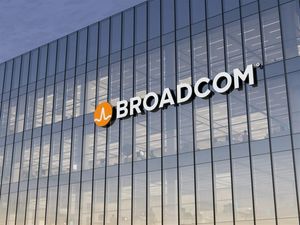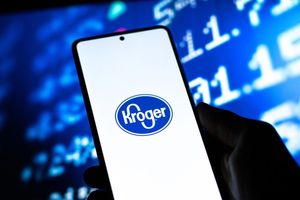The "Hempcrete Market - Sustainable Construction & Forecast 2025-2033" report has been added to ResearchAndMarkets.com's offering.
The Global Hempcrete Market will grow to US$ 38.69 billion by 2033 from US$ 25.11 billion in 2024 with a CAGR of 4.92% between 2025 and 2033.
Increased demand for sustainable, energy-efficient building materials is fueling growth. The eco-friendly nature of Hempcrete, its carbon sequestration value, and its high insulation performance are the primary drivers of adoption in residential and commercial building segments globally.
Internationally, hempcrete is picking up pace in environmentally conscious markets such as Europe, North America, and sections of the Asia-Pacific. Nations such as France, the UK, and Canada have been at the forefront because they have favorable laws and a green building culture. With sustainability emerging as a major player in architecture and real estate development, hempcrete increasingly finds itself as an attractive green building material alternative to conventional structures, fueling interest and growth across the world.
Growth Drivers of the Global Hempcrete Market
Growing Demand for Green and Sustainable Building Materials
As the construction sector looks for low-carbon options, hempcrete is becoming more popular because it is an environmentally friendly material and can sequester carbon. It's a biodegradable, renewable material with greatly diminished greenhouse gas emissions. Governments and builders are switching over to green building codes and certifications, which promote the use of hempcrete. This need for green architecture is one of the main driving forces behind hempcrete's increasing international market presence. Sep 2024, Hempcrete is a green building product using hemp shiv, water, and lime, with less environmental impact than common bricks and concrete, which are damaging to the environment.
Superior Thermal Insulation and Energy Efficiency
Hempcrete provides better thermal insulation characteristics, which lower heating and cooling energy use. This makes it ideal for energy-efficient construction projects and passive house designs. With global energy costs rising and environmental regulations tightening, builders are prioritizing materials that improve building performance. Hempcrete's ability to regulate temperature and humidity naturally makes it a preferred material for both residential and commercial green structures. March 2025, Hempitecture released it is the first American company to have its hemp lime formula tested to ASTM E84, determining it to be 100% fireproof and a safe product for use in high-risk wildfire areas or for homeowner and building owner desire to make structures safer.
Government Support and Policy Initiatives
Numerous nations are implementing policies to advance industrial hemp growth and application in the building industry. Availability of raw materials, fuelled by subsidies, tax benefits, and relaxations in regulations on hemp farming is a driver. Furthermore, certifications for sustainable construction - such as LEED and BREEAM favour hempcrete due to its ecological benefits.
Thus, these policy efforts are accelerating the development of hempcrete supply chains and facilitating wider commercial adoption of hempcrete around the world. July 2024, As part of an attempt by the government to promote the use of more sustainable building materials, the U.S. Environmental Protection Agency (EPA) has granted a close to $6.2 million grant to a non-profit that specializes in working with hempcrete, a concrete-like substance that's composed of hemp.
Challenges of the Global Hempcrete Market
Lack of Structural Strength Constrains Application
Hempcrete is not structural, so it cannot be used to substitute concrete or bricks in main structural elements. This restricts its application to insulation and non-structural use. It has to be used in conjunction with wooden or metal frames by builders, increasing complexity and expense. For most developers who are not used to hempcrete building, it presents an obstacle for adoption. Its demand in massive or high-rise developments is also decreased due to the necessity of structural add-ons.
Limited Availability and Awareness of Raw Materials
Despite its benefits, hempcrete remains underutilized due to limited awareness among builders, architects, and the general public. Additionally, in many regions, the legal status of industrial hemp is unclear or restrictive, impacting hemp cultivation and hurd availability. Inadequate supply chains and a lack of local processing facilities also contribute to higher costs. These factors collectively slow down the scalability and affordability of hempcrete in global markets.
Global Wall Hempcrete Market
The wall application segment leads the hempcrete market because of hempcrete's unparalleled insulation and breathability. When employed as an infill in timber-framed buildings, it forms energy-efficient and moisture-controlling walls. It is extremely popular in green residential and low-rise commercial developments. With sustainable building gaining mainstream momentum, wall uses of hempcrete are seeing vigorous growth, particularly in environmentally concerned regions like Europe and North America. June 2022, Homeland Hempcrete utilized 9.25 to 12 inches thick hurd made of industrial hemp fiber wall panels to upgrade exterior walls in buildings and residences. This allowed the firm to achieve greater product traction and build its market position.
Global Roof Hempcrete Market
Hempcrete is becoming more widely used in roof insulation systems, particularly in passive house and eco-friendly designs. It works to balance indoor temperatures, cuts heat loss, and reduces energy use. Hempcrete benefits from roof applications due to its light weight and resistance to fire, and it is well-suited for retrofits and green roofs. With demand increasing for sustainable roofing, hempcrete is becoming increasingly popular in new constructions as well as in refurbishments.
Global Residential Hempcrete Market
Residential building is a significant force behind the demand for hempcrete, with home buyers seeking healthier, energy-efficient, and sustainable homes. Hempcrete is applied to wall insulation, flooring, and roofing systems in single-family residences, eco-villages, and off-grid dwellings. Its non-toxic, breathable nature makes it perfect for indoor spaces. As people become more environmentally conscious, the use of hempcrete in residential housing is picking up speed across the world.
Global Non-residential Hempcrete Market
The non-residential market, such as schools, offices, and hospitality buildings, is increasingly integrating hempcrete for green certification and energy efficiency purposes. While restricted by structural factors, hempcrete is applied to interior insulation and sound control. Environmentally friendly businesses and government initiatives are propelling this market. As sustainability is becoming an imperative in public and commercial construction, demand for hempcrete in non-residential construction is likely to increase.
Key Players Analysis (Overviews, Key Persons, Recent Developments, SWOT Analysis, Revenue Analysis)
- IsoHemp
- Hempcrete Natural Building Ltd.
- Americhanvre Cast Hemp
- Lime Technology
- Just BioFiber Structural Solutions
- HempEco Systems
- Hempitecture Inc.
- Australian Hemp Masonry Company
- Hemp Block USA
- Dun Agro Hemp Group
Key Attributes:
| Report Attribute | Details |
| No. of Pages | 200 |
| Forecast Period | 2024 - 2033 |
| Estimated Market Value (USD) in 2024 | $25.11 Billion |
| Forecasted Market Value (USD) by 2033 | $38.69 Billion |
| Compound Annual Growth Rate | 4.9% |
| Regions Covered | Global |
Key Topics Covered:
1. Introduction
2. Research & Methodology
2.1 Data Source
2.1.1 Primary Sources
2.1.2 Secondary Sources
2.2 Research Approach
2.2.1 Top-Down Approach
2.2.2 Bottom-Up Approach
2.3 Forecast Projection Methodology
3. Executive Summary
4. Market Dynamics
4.1 Growth Drivers
4.2 Challenges
5. Global Hempcrete Market
5.1 Historical Market Trends
5.2 Market Forecast
6. Market Share Analysis
6.1 By Application
6.2 By End Use
6.3 By Countries
7. Application
7.1 Wall
7.2 Floor
7.3 Roof
8. End Use
8.1 Residential
8.2 Non-residential
9. Countries
9.1 North America
9.1.1 United States
9.1.1.1 Market Analysis
9.1.1.2 Market Size & Forecast
9.1.2 Canada
9.1.2.1 Market Analysis
9.1.2.2 Market Size & Forecast
9.2 Europe
9.3 Asia-Pacific
9.4 Latin America
9.5 Middle East & Africa
10. Value Chain Analysis
11. Porter's Five Forces Analysis
11.1 Bargaining Power of Buyers
11.2 Bargaining Power of Suppliers
11.3 Degree of Competition
11.4 Threat of New Entrants
11.5 Threat of Substitutes
12. SWOT Analysis
12.1 Strength
12.2 Weakness
12.3 Opportunity
12.4 Threats
13. Pricing Benchmark Analysis
13.1 IsoHemp
13.2 Hempcrete Natural Building Ltd.
13.3 Americhanvre Cast Hemp
13.4 Lime Technology
13.5 Just BioFiber Structural Solutions
13.6 HempEco Systems
13.7 Hempitecture Inc.
13.8 Australian Hemp Masonry Company
13.9 Hemp Block USA
13.10 Dun Agro Hemp Group
14. Key Players Analysis
For more information about this report visit https://www.researchandmarkets.com/r/okz2d1
About ResearchAndMarkets.com
ResearchAndMarkets.com is the world's leading source for international market research reports and market data. We provide you with the latest data on international and regional markets, key industries, the top companies, new products and the latest trends.
View source version on businesswire.com: https://www.businesswire.com/news/home/20250912663265/en/
Contacts
ResearchAndMarkets.com
Laura Wood, Senior Press Manager
press@researchandmarkets.com
For E.S.T Office Hours Call 1-917-300-0470
For U.S./ CAN Toll Free Call 1-800-526-8630
For GMT Office Hours Call +353-1-416-8900





